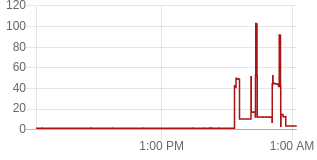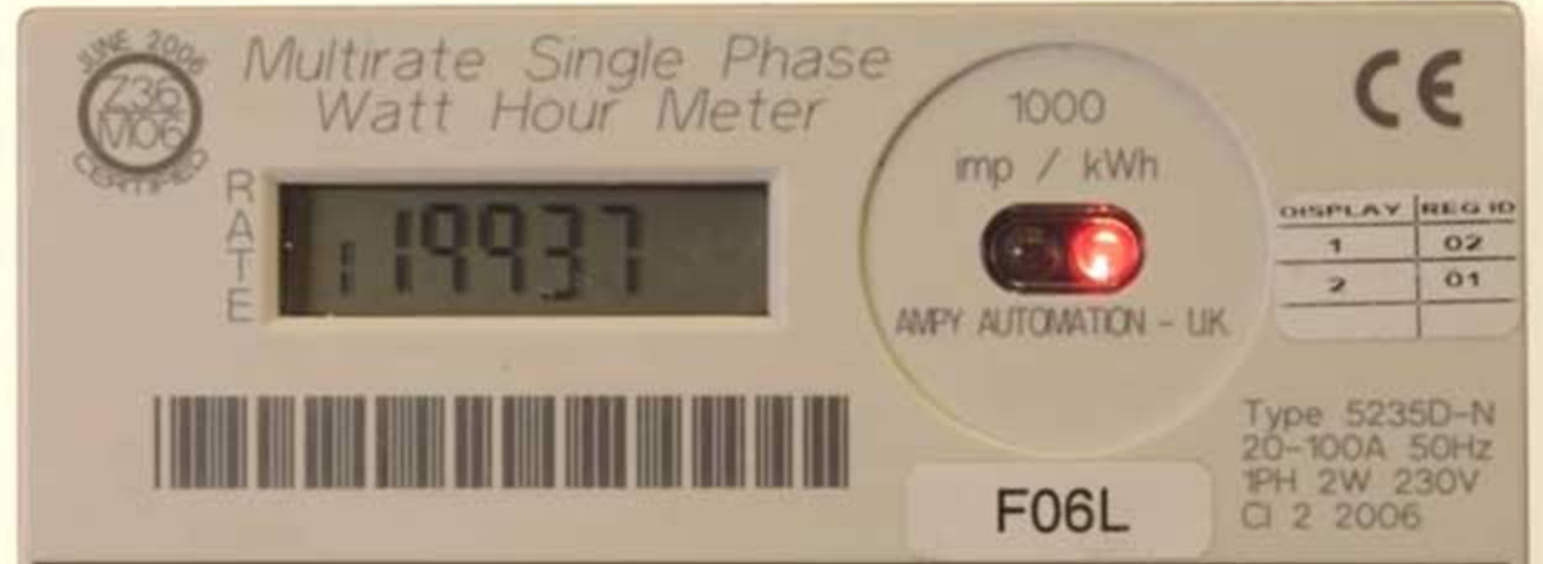We'd like to remind Forumites to please avoid political debate on the Forum... Read More »
📨 Have you signed up to the Forum's new Email Digest yet? Get a selection of trending threads sent straight to your inbox daily, weekly or monthly!
reading power consumtion in real time with smart electric meter
Comments
-
Getting access to the real time data from your meter ranges from difficult to darned impossible depending on your supplier. You need an approved access device that is paired with your meter - I only know of one supplier that will do this, and even then, you need to jump through countless hoops.Not all is lost though - There are a number of energy consumption meters that can be clipped round the cable that goes between your meter and the consumer unit. Some suggestions -https://www.theowl.com/index.php/energy-monitors/standalone-monitors/owl-micro/https://www.aliexpress.com/item/32872623242.html - I use this one hooked up to a little computer running Home Assistant.Whilst you can get little devices to count the LED flashes on your meter, you still need a computer to process the data, and the resolution is not very good.Sample graph from the lighting circuit...
 Any language construct that forces such insanity in this case should be abandoned without regrets. –
Any language construct that forces such insanity in this case should be abandoned without regrets. –
Erik Aronesty, 2014
Treasure the moments that you have. Savour them for as long as you can for they will never come back again.0 -
Because all the bugs are still not ironed out ? eg Meter comms with the IHD get lost so you still have to read the meters outside. Not all IHDs showing the volume of gas used as required. Gas meters not communicating with the hub so estimated reads. Also still many of the smaller (cheaper) suppliers not set up to use smarts.st999 said:
Not everyone's meter is inside and easily accessible.Gerry1 said:You don't need a smart meter to do that, just look at the red LED marked 1000 Imp/kWh or similar, and do the sums.For example, 50 flashes (impulses) per minute = 3000 flashes per hour = 3kWh per hour = 3kW.
Mine is outside and since it is a smart meter I never need to go outside in the pouring rain or freezing cold to read it, I just look at the IHD
I don't understand why some people are so against them.1 -
No IHD will ever show the gas consumption in real-time as the gas meter only communicates with the comms hub every 30 mins as the meter is battery powered unlike the electricity meter.brewerdave said:Not all IHDs showing the volume of gas used as required.
0 -
beer_time said:Gerry1 said:
If there is a light marked '1000 Imp/kWh' it means that after it has flashed 1000 times you have use one kiloWatt hour, costing 15p or whatever your tariff charges you. The faster it flashes, the more it's costing you.beer_time said:Gerry1 said:You don't need a smart meter to do that, just look at the red LED marked 1000 Imp/kWh or similar, and do the sums.For example, 50 flashes (impulses) per minute = 3000 flashes per hour = 3kWh per hour = 3kW.there are 2 red lights flashing one with KW written on itBut I dont understand what they menaI still dont get it!Dose that mean i need to see how many times it flashes in an hourPower (measured in Watts or kiloWatts) is an instantaneous value, just like speed. Energy (in Watt-hours or kiloWatt-hours) is like distance, the rate used multiplied by the time.The power drawn can vary if it's a device like a washing machine, oven, tumble dryer etc so a short time frame may show a the maximum value (oven or washing machine heating up) or close to zero (oven or tumble dryer switched off by the thermostat, washing machine turning intermittently). A longer timeframe will show the average power, but that's not what you say you want to know.So you don't need to count the flashes for an hour. A minute will suffice for a high power load (e.g. 50 flashes equals 3kW if the LED says 1000 Imp / kWh), or you can measure the time between each flash if the load is low power (e.g. a flash every 90 seconds works out at 40 flashes per hour, which corresponds to 40W.0 -
To put it another way,
- 1 flash per second is 3.6kW,
- 1 flash per 2 seconds is 1.8kW
- 1 flash per 4 seconds is 0.9kW
If it sticks, force it.
If it breaks, well it wasn't working right anyway.0 - 1 flash per second is 3.6kW,
-
I looked at it last night and one of the red lighs has something written under it (cant remeber) but it did not say KWhThe other light has nothing written on itWill have another look soon0
-
OK I had another look at itThe top red light seams to flash 50 times a second in 5 flash intervals and regardless of the load that is being drawnThe bottom red light which I have only tested with everything switched off apart from the fridge as I am trying to work out the load of a typical fridge to start a mobile catering buisness, so I dont have to go out and spend 20 quid on a meter (saving money you see!)Flashed once in 51 seconds Can you make any sence of it please?Thanks0
-
With all due respect, you're never going to master all the book-keeping, VAT, tax forms etc if you can't do the simple sums previously explained to you in some detail !You haven't even established that it's the correct flashing light, nor how many flashes equal 1kWh, so your question can't be answered. It might be 1000 flashes (impulses), 800 or something else. It will be clearly labelled.
 Your basic philosophy is also flawed. You're unlikely to be using a 240V domestic fridge in a mobile environment, the consumption will be higher if the door or lid is continually being opened, the ambient temperature in a vehicle on a sunny day is likely to be higher than in your kitchen...In any case, you'll need to be able to supply the rated load, which will be shown on the label or rating plate, although the average power drawn will usually be lower because the thermostat will cut out the motor for some of the time.Sorry to query your ideas, but your project needs good understanding and firm foundations, not something built on sand.0
Your basic philosophy is also flawed. You're unlikely to be using a 240V domestic fridge in a mobile environment, the consumption will be higher if the door or lid is continually being opened, the ambient temperature in a vehicle on a sunny day is likely to be higher than in your kitchen...In any case, you'll need to be able to supply the rated load, which will be shown on the label or rating plate, although the average power drawn will usually be lower because the thermostat will cut out the motor for some of the time.Sorry to query your ideas, but your project needs good understanding and firm foundations, not something built on sand.0 -
Gerry1 said:With all due respect, you're never going to master all the book-keeping, VAT, tax forms etc if you can't do the simple sums previously explained to you in some detail !You haven't even established that it's the correct flashing light, nor how many flashes equal 1kWh, so your question can't be answered. It might be 1000 flashes (impulses), 800 or something else. It will be clearly labelled.
 Your basic philosophy is also flawed. You're unlikely to be using a 240V domestic fridge in a mobile environment, the consumption will be higher if the door or lid is continually being opened, the ambient temperature in a vehicle on a sunny day is likely to be higher than in your kitchen...In any case, you'll need to be able to supply the rated load, which will be shown on the label or rating plate, although the average power drawn will usually be lower because the thermostat will cut out the motor for some of the time.Sorry to query your ideas, but your project needs good understanding and firm foundations, not something built on sand.Well first off the meter in your photo is nothing like mine what so ever!You're unlikely to be using a 240V domestic fridge in a mobile environment WHY NOT?They are actully being used as a kegorator and the air intake will be drawn from out side of the vanThe rated load dispayed on the fridge is for maximum load ie. when you boot the fridge up from room temprature
Your basic philosophy is also flawed. You're unlikely to be using a 240V domestic fridge in a mobile environment, the consumption will be higher if the door or lid is continually being opened, the ambient temperature in a vehicle on a sunny day is likely to be higher than in your kitchen...In any case, you'll need to be able to supply the rated load, which will be shown on the label or rating plate, although the average power drawn will usually be lower because the thermostat will cut out the motor for some of the time.Sorry to query your ideas, but your project needs good understanding and firm foundations, not something built on sand.Well first off the meter in your photo is nothing like mine what so ever!You're unlikely to be using a 240V domestic fridge in a mobile environment WHY NOT?They are actully being used as a kegorator and the air intake will be drawn from out side of the vanThe rated load dispayed on the fridge is for maximum load ie. when you boot the fridge up from room temprature
0
Confirm your email address to Create Threads and Reply

Categories
- All Categories
- 351.3K Banking & Borrowing
- 253.2K Reduce Debt & Boost Income
- 453.8K Spending & Discounts
- 244.3K Work, Benefits & Business
- 599.5K Mortgages, Homes & Bills
- 177.1K Life & Family
- 257.8K Travel & Transport
- 1.5M Hobbies & Leisure
- 16.2K Discuss & Feedback
- 37.6K Read-Only Boards




